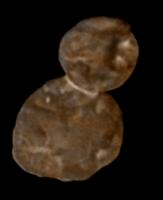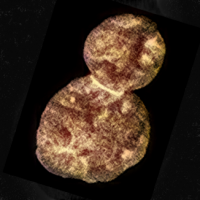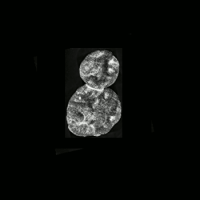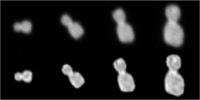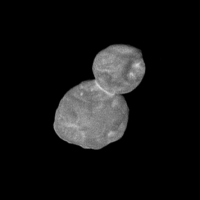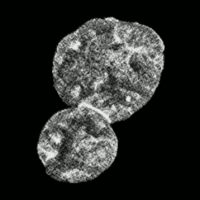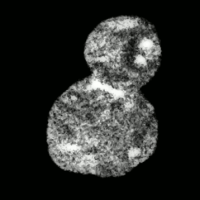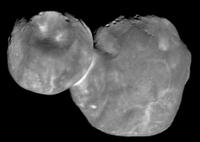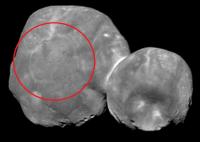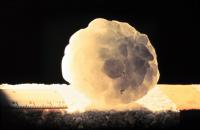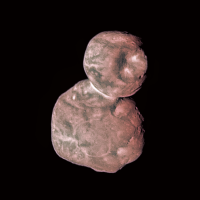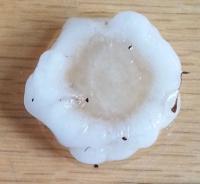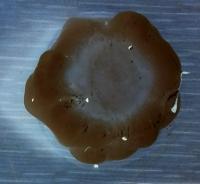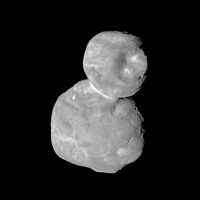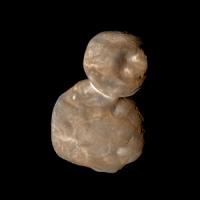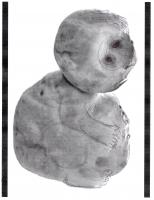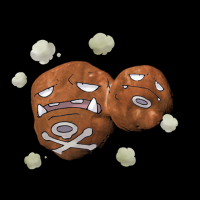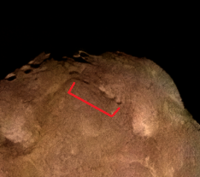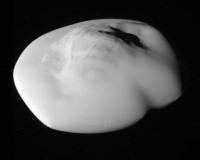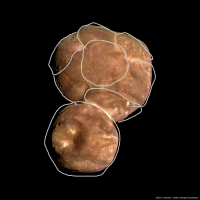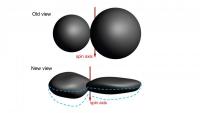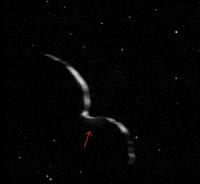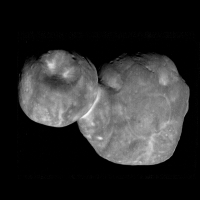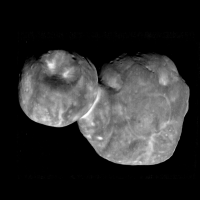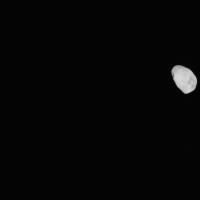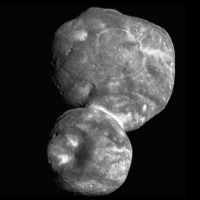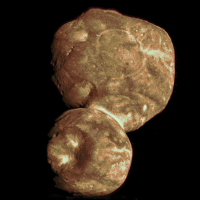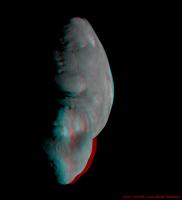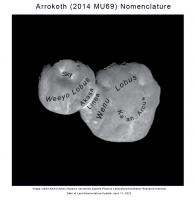Printable Version of Topic
Click here to view this topic in its original format
Unmanned Spaceflight.com _ New Horizons _ NH Arrokoth (formerly Ultima Thule) Encounter Observations & Results
Posted by: nprev Jan 4 2019, 01:16 AM
This will be where we talk about the data as it arrives over the next 20 months or so.
Posted by: Roman Tkachenko Jan 6 2019, 02:40 AM
Just made it a little smoother ![]()

Posted by: Decepticon Jan 6 2019, 11:30 PM
Can we expect more images by Friday 11th?
Posted by: Gladstoner Jan 7 2019, 07:40 AM
Which areas of Ultima Thule got the highest resolution coverage?
Posted by: nprev Jan 7 2019, 03:39 PM
Posts concerning the search for a new target after Ultima Thule moved to the http://www.unmannedspaceflight.com/index.php?showtopic=5368 thread. ![]()
Posted by: hendric Jan 7 2019, 04:05 PM
New Horizons is in solar conjunction, I think new data will be arriving next week
http://www.planetary.org/multimedia/space-images/spacecraft/dss43-talking-to-new-horizons.html
https://spacenews.com/new-horizons-completes-flyby-of-ultima-thule/
Posted by: MahFL Jan 7 2019, 10:29 PM
They did not release that information. They took one stripe of images as they did the closest flyby. Assuming it was a horizontal shot across the "center" some of Ultima ( the big lobe ), might be imaged, bearing in mind when the load was sent up they did not fully know the shape or spin rate.
Posted by: john_s Jan 7 2019, 11:46 PM
The LORRI field of view in the highest-resolution "CA06" LORRI images is just a bit bigger than the size of the target, so with luck we could get the whole thing. The relatively slow rotation means that we'll cover much the same face as seen in the images already down, though of course from a somewhat different angle.
John
Posted by: WTW Jan 8 2019, 08:18 AM
There was one more DSN downlink from NH received right after the last news conference, but that may have been mostly engineering data -- hard to tell.
(DSN Now was being flakey during that - hopefully the DSN itself wasn't, and the download went OK.)
Posted by: Ron Hobbs Jan 10 2019, 04:11 AM
Canberra is listening and talking to New Horizons according to DSN Now.
(Rubs his hands impatiently)
Posted by: Nafnlaus Jan 10 2019, 12:19 PM
(Rubs his hands impatiently)
Finally! Can't wait to get some new data
Posted by: vikingmars Jan 11 2019, 10:16 AM
An excellent article was just posted by the NH team about Ultima-Thule :
"Overview of initial results from the reconnaissance flyby of a Kuiper Belt planetesimal: 2014 MU69"
https://arxiv.org/abs/1901.02578
CONGRATULATIONS again to the NH team ftr this incredible feat ! ![]()
Posted by: pioneer Jan 11 2019, 05:52 PM
Does anyone know when the next press conference will be or if it has been scheduled?
Posted by: wildespace Jan 12 2019, 09:50 AM
"Overview of initial results from the reconnaissance flyby of a Kuiper Belt planetesimal: 2014 MU69"
https://arxiv.org/abs/1901.02578
CONGRATULATIONS again to the NH team ftr this incredible feat !
There's a new word I learned today - variegation.
Excited to hear all this information (however preliminary) coming in from the mission. Glad they picked up on the colour variation near the "neck".
Posted by: fredk Jan 13 2019, 02:50 PM
It's hard to know without seeing the raw images how much noise we have in these views. To me they look noisy (and we were told to expect noisy images), so I'm suspicious of the fine, pixel-scale detail. But on the other hand, the abstract cited above refers to the "mottled appearance", and the team should know whether the amplitude of that fine detail is consistent with noise or not. Or maybe by the "mottling" they mean several-pixel-scale detail? It'll be really interesting to see the closer views.
And also interesting to see higher phase angle views, to break the degeneracy between topography and albedo variations...
Posted by: kenny Jan 13 2019, 10:00 PM
The interesting light color at the "neck" might suggest there could be slight movement between the 2 component bodies, and "grinding" of relatively fresh ice in that area...
Posted by: HSchirmer Jan 13 2019, 11:29 PM
Anybody know which direction is "up" and which is "down" at the neck of a contact binary like UT?
How did / could that change as the binary spun-down?
Posted by: JTN Jan 14 2019, 01:19 AM
http://pluto.jhuapl.edu/News-Center/Press-Conferences/2019-01-02/960x540/Slide19.jpeg from the http://pluto.jhuapl.edu/News-Center/Press-Conferences/index.php?page=2019-01-02 sheds some light on the present situation. (It doesn't give a vector but I assume things roll toward the neck.)
Posted by: JTN Jan 14 2019, 10:01 AM
Tidbit from Alan Stern on Twitter yesterday: "We’re plaiinong an inage release— in 10 days!" (I make that about 23 Jan).
https://twitter.com/AlanStern/status/1084661266159931393
Posted by: alex_k Jan 14 2019, 02:00 PM
An animation about details. Quality of 4:22 LORRI image is lower, but still.
Posted by: Alan Stern Jan 14 2019, 10:26 PM
https://twitter.com/AlanStern/status/1084661266159931393
Update: Now planning an image release for this week too.
Sorry for the typos above, was walking between flights in Doha; well, actually running between flights!
Posted by: peikojose Jan 15 2019, 12:55 AM
Sorry for the typos above, was walking between flights in Doha; well, actually running between flights!
Nice!
Posted by: John Moore Jan 15 2019, 02:51 AM
Sorry for the typos above, was walking between flights in Doha; well, actually running between flights!
Interviewed Alan many years' back...a wonderful experience: walking then, running still today to inspire.
Posted by: Marcin600 Jan 15 2019, 07:18 PM
A slightly more elongated and less round shape of UT from a slightly different perspective ? https://twitter.com/hashtag/UltimaThuleFlyby?src=hash
Posted by: Marcin600 Jan 16 2019, 12:00 AM
New movie from 500000 km to 28000 km: http://pluto.jhuapl.edu/News-Center/News-Article.php?page=20190115
Posted by: Øyvind G Jan 16 2019, 01:04 AM
From the release:
"...rotation of Ultima Thule in the seven hours between 20:00 UT (3 p.m. ET) on Dec. 31, 2018, and 05:01 UT (12:01 a.m.) on Jan. 1, 2019..."
Isn't that nine hours?
Posted by: john_s Jan 16 2019, 01:27 AM
Oops! Sorry about that.
John
Posted by: Ian R Jan 16 2019, 07:19 AM
Wonderful images! Amazing how a slew of pictures at very moderate resolution can still be pretty insightful. I took one of the GIF animations and made an aligned and 'bouncy' version:
Looks as if the lobes are less spherical than they are hamburger shape!
Posted by: Ian R Jan 16 2019, 08:19 AM
My speculation is that the two lobes were never individual objects in the first place, and that the original fast rotation of MU69 -- back when it was newly formed and more prone to deformation -- caused a 'blob' to begin to separate from the main body due to centripetal forces, which in the end weren't enough for the two components to part completely.
Just a stab in the dark from a layperson!
Posted by: Marcin600 Jan 16 2019, 08:38 AM
Just a stab in the dark from a layperson!
I think that this is one of many possibilities. In any case, things seem to be more complicated than they originally seemed
Posted by: Marcin600 Jan 16 2019, 09:03 AM
For example, two bodies could be originally separate and flattened independently as a result of rotation. More data from New Horizons is needed.
Posted by: stevesliva Jan 16 2019, 03:40 PM
Or accretion.
This is definitely real? If I focus on just the neck/isthmus then it does appear real, but I worry it's just an artifact.
Posted by: pdalek Jan 17 2019, 05:33 AM
Ultima Thule looks like a snowman. A big snowman is a good way to think about formation and properties.
Comets have density about that of handmade snowballs. U-T is probably similar.
Calculating gravitation and centrifugal acceleration will show it is gravitationally bound over the entire surface and so was not formed by stretching a sphere.
The escape velocity is about that of a human thrown snowball. Fall velocities would be similar. At such velocity, a small snowball acreating under gravity will splat. For a large falling snowball, self gravitation will keep the ball in shape. Higher impact velocity would change things, but without large nearby planets to shift orbits, this is unlikely.
The compressive strength ordinary packed snow is sufficient to prevent a 19km and a 14km balls from merging to a much more compact space. It is easy to estimate the contact area.
Modelling the gravitational field shows local down is up to about 30 degrees from surface normal near the neck. This is about the angle of repose of lightly packed snow.
Posted by: Marcin600 Jan 17 2019, 08:15 AM
As Stevesilva supposes, the slightly flattened shape of Ultima (and Thule?) - if it is not a low resolution artifact - may be the result of the specificity of the accretion process itself - in one plane, a bit like an accretion disc (?)
I think the wonderful New Horizons team is already working on the interpretations.
Posted by: john_s Jan 17 2019, 12:00 PM
Looks as if the lobes are less spherical than they are hamburger shape!
Hi Ian-
Thanks for that very revealing "de-rotated" animation. We on the science team had been planning to do the same thing, but you beat us to it. When I sent the team a link to your animation, it sparked quite an e-mail storm. UT continues to surprise!
Thanks again,
John
Posted by: Explorer1 Jan 18 2019, 05:13 AM
New post from Alan: http://pluto.jhuapl.edu/News-Center/PI-Perspectives.php?page=piPerspective_01_17_2019
In addition to data downlink from MU69, some distant observations of the unchosen flyby target in March, and some extra fuel for post 2020 maneuver to a more distant object.
Posted by: Roman Tkachenko Jan 18 2019, 09:28 AM
I just played around with the sequence
https://www.youtube.com/watch?v=T_HGXKO9kus
Posted by: alex_k Jan 18 2019, 03:00 PM
Looking for surface features. Strong Fourier-based processing performed, details are exaggerated if resolved properly.
05:01:47 (better res) vs 6 stacked 04:04
Focused on Ultima:
Focused on Thule:
Posted by: Ian R Jan 18 2019, 05:37 PM
Thanks again,
John
Hi John,
That's pretty amazing! Thanks for the feedback: it's an honor to be tangentially involved with the team as new discoveries are being made about UT.
Ian.
Posted by: alan Jan 18 2019, 07:54 PM
What would happen when a body the size of one of UT's lobes was spun up if most of its mass was made up of a bunch of spheres a few km's in diameter instead of many smaller pieces? Would it end up hamburger shaped instead of football shaped as it shifted toward equilibrium?
Posted by: kenny Jan 21 2019, 07:27 PM
Analysis of Ultima Thule comparing its morphology with those of previously-imaged comets....
https://www.forbes.com/sites/startswithabang/2019/01/21/new-horizons-big-reveal-on-mu69-ultima-thule-is-a-typical-future-comet/#633d1e8431e0
...by astrophysicist author Ethan Siegel.
Posted by: john_s Jan 24 2019, 08:53 PM
The current best image (a big improvement over the earlier ones, due to lower noise and higher phase angle) has just been posted:
http://pluto.jhuapl.edu/News-Center/News-Article.php?page=20190124
John
Posted by: Phil Stooke Jan 24 2019, 09:48 PM
Wow, that is a fantastic image - I have just played with it slightly here by brightening the terminator to show faint features a bit better. Just don't ask me to interpret it! - well, OK, maybe the broader depressions near the terminator of the large lobe look a bit like they are bounded by scalloped scarps retreating due to volatile loss.
Phil
Posted by: Marcin600 Jan 24 2019, 10:28 PM
An amazing object!!! And it is becoming more and more fascinating. There are really a lot of these small hollows on almost the entire surface. I can not wait for more detailed pictures. Sadly, we'll never see the reverse side...
Posted by: Gladstoner Jan 24 2019, 10:36 PM
This faint white ring is... interesting:
So far, it doesn't seem to be associated with topographical features.
I wonder if some Kuiper belt objects will display relic binary-contact collars, i.e. talus rings left over after the binary components separated by some process (impacts, gravitational interactions). I suppose they could be thought of as 'kiss marks'.
Since this ring is near the rotational pole, and rather thin, it probably isn't an example.
Posted by: Explorer1 Jan 24 2019, 10:51 PM
Amazing new image! It really does look more like the smaller lobe has massive impact on it (like Phobos' Stickney crater) or Damodar on Mathilde.....
This confirms the closest approach images were captured successfully? Big sigh of relief!
Any idea where exactly the rotation pole is? I'm assuming near the centre of mass, on the right side of the circle Gladstoner added.
Posted by: abalone Jan 24 2019, 11:04 PM
I get the impression that its possibly evidence of been put together like a hailstone accretion and the lines and lumpy appearance might be an artifact of that. https://upload.wikimedia.org/wikipedia/commons/9/94/Granizo.jpg Could also be the reason for the 'hamburger' shape if the individual lobe were slowly rotating during the accretion process before coming together.
Posted by: hendric Jan 24 2019, 11:15 PM
Yeah that's my thought too, kinda like a kid with a snowball that keeps packing more snowballs onto it. Maybe the Thule lobe is just large enough to hold itself together, while the smaller objects just slumped.
Posted by: Ian R Jan 24 2019, 11:32 PM
It's a jaw-dropping image: congratulations to the NH science team. ![]()
Here's a colorized version, purely for aesthetic purposes:
Posted by: Marcin600 Jan 24 2019, 11:38 PM
a bit like a flattened hail https://ljkrakauer.com/LJK/00s/weirdhail.htm
covered with a tholin shell
Posted by: dudley Jan 25 2019, 12:20 AM
One side of that dim ring on Ultima appears to be made up of two slightly separated arcs, on the side nearest Thule. The ring looks lopsided at first glance, but appears to have bilateral symmetry, on either side of a line running across it diagonally toward the dark cleft on one side of the 'neck' region.
Posted by: HSchirmer Jan 25 2019, 05:48 AM
Here's a colorized version, purely for aesthetic purposes:
Very interesting how there's a scarp where the surface crust appears to end at the lower right,
and the highly defined craters are only on the area where there is no scarp.
There was a paper that calculated that the grooves on the Martian moon Phobos could be caused by low velocity impact with boulders that rolled along the surface.
Sorta looks like Thule and Ultima made contact around 5 o'clock, and rolled along ripping up the crust until it settled at 1 o'clock.
Soo, basically, it looks like a Bert the Turtle from 1950s civil defense films.
Posted by: serpens Jan 25 2019, 07:01 AM
The news article comments on differences in the geologic character of the two lobes of Ultima Thule. Whether the suspected difference is compositional or textural this could imply the lobes developed separately. If so then when Ultima and Thule came together there would potentially have been a few scrapes, bounces and heat as linear and angular momentum was sorted out. In this respect the light ring Gladstoner refers to seems to fit the crater in the smaller lobe. Bit of a stretch but not beyond the bounds of possibility.
Posted by: Ian R Jan 25 2019, 11:23 AM
The two best views of UT thus far (courtesy of LORRI and MVIC):
Posted by: Steve5304 Jan 25 2019, 01:08 PM
Man...that ring...what the
The further out we get the stranger things are. It looks like a sad snowman! The media will jump all over this
Posted by: stevesliva Jan 25 2019, 02:26 PM
If we think back to the fact that they're more hamburgers than spheres that ring might be circumpolar (well, the pre-merger rotational pole) and Ultima might've looked like Saturn's moon Atlas or Pan before getting a remora.
Posted by: Gladstoner Jan 25 2019, 03:53 PM
The sparse cratering is intriguing. So far, the bodies don’t seem to be crater-saturated as one would expect for small, primitive bodies. Either they were resurfaced, or we are seeing a barely altered primordial surface. I don’t know of any other body in the solar system where this is close to being the case. Of course, forthcoming images will provide more details.
Plus, the crater size distribution seems to be one large depression on Thule and a few pits near the limit of resolution. So far, there appears to be a dearth of intermediate sizes. It’ll be interesting to find out what this says — if anything— about object distribution in this part of the solar system, assuming these are impact craters.
Also, there seem to be a number of concave scarps that are outward facing. Could these be slumping that occurred on an earlier, rapidly-rotating Ultima?
Posted by: Webscientist Jan 25 2019, 04:38 PM
Very nice work!
Some "scientific artists" of the past had anticipated the shape of that new type of solar system object. Really remarkable! ![]()
At first sight, I would bet that the density of Thule is higher than the density of the external blanket of Ultima since Ultima seems to have been more distorted by the relatively soft impact wheras Thule seems more uniform (or less distorted).
Can the gravitational interactions between the two parts in the rotation process engender landslides or resurfacing events erasing some craters?
Here's a colorized version, purely for aesthetic purposes:
Posted by: Steve5304 Jan 25 2019, 05:59 PM
I would think that you just don't have that much out that far...it unlikely to be any sort of resurfacing...how would that even happen that far out on a dead object like this?? Accretion over millions of years??
Posted by: tty Jan 25 2019, 07:07 PM
It seems to me that an impact as large as the one on Thule would create enough momentum to separate the lobes, at least temporarily. Could the "ring" be a previous "attachment point"?
Posted by: Marcin600 Jan 25 2019, 07:30 PM
Small round pits are not necessarily impact craters. They are best seen at the terminator, but they seem to cover large surfaces - they appear as white dots. They can be "internal" and not "external" origin. They have similar size and lack of size distribution typical of craters. (I'm not talking about a big hole at Thule - it can be a crater, but it does not have to be!)
Posted by: Rittmann Jan 25 2019, 08:14 PM
Some speculation based on the last image two-frame rotating image...
In the rotational image it seems as if there was not one, but two rings of bright material: the central one, and another one to the lower left side of the image. If this is a remnant of an ancient contact point between Ultima and Thule, I speculate that one of them was an earlier contact point and a later impact made Thule roll over Ultima creating the second ring. The exact place where the rolling happened could be the bright patch of material that is where both possible rings find each other. Since the lower left area apparently has two small craters / sinkholes, it would be the most ancient area.
In Thule there appears to be two different types of terrain. Right on the top we see some possible cratering, as well as on the right side of the depression / crater. But the central left side of the depression / crater appears smooth to a certain degree. This may be due to lightning conditions, but I think that an impact has enough kinetic energy as to melt partially the material in Thule and make it flow over older terrain. With such a low gravity, most of the splash would be lost but the melting could flow that way. The "melting" also seems to hide a bright line, that could be the ancient contact point between Ultima and Thule: it appears to be an arc of roughly the same size of the other rings in the current contact area and in Ultima. If so, stretching the hypothesis the V in Thule could correspond to the marking of the rolling: in Ultima we see two well-defined arcs touching, and the V in Thule would be the remnant of one of the sides of the touching arc. Also, the crater / depression has no clean border which could be explained by the melting hypothesis.
So the story of these bodies, according to these speculations, would be:
1. Formation of both bodies and for some unknown mechanism they eventually enter in contact. Original contact point is the central circle on Ultima.
2. Some moderate impact causes Thule to roll over Ultima, possibly from a not strong contact equilibrium position. This creates a second neck, the lower-left circle that seems more visible in the rotation image.
3. A bigger impact creates the crater / depression seen in Thule, splitting the contact binary and causing both bodies to change rotation axis. Eventually both bodies came into contact again, in the position we see nowadays. Impact creates enough cynetic energy as to partially melt the surface of the bodies, causing the flows we see and partially erasing the original contact rings in Thule, as well as melting the crater borders. Ejecta orbits the plane of the impact until collisioning with both bodies, littering the craters we see near the border of both bodies. Since ejecta impactors are small, melting is on a smaller scale and don't cause flows.
Against these hypothesis: there appears to be some sort of flow on Ultima, or at least similarities in the surface features, yet the rings are dimmed but not erased. This could mean that the flow is not such, but the rain of fine debris from the impact. The original impactor would then be the source of most impact craters we see in the border: we can see in the high-resolution image at least a couple of craters of a similar size in the (2) ancient neck, so at least from current data it seems that craters have a clear distribution over both surfaces.
As for the mechanism of making both bodies end up contacting, the only idea that comes into my mind is that since both bodies are fairly irregular in shape, the micro-gravity field should be far from homogeneous causing losses over time as mutual rotations cause shifts in the gravity field, so orbit would degrade over time. But I have no expertise in orbital mechanics, so I don't know if I just said something stupid here.
Posted by: wildespace Jan 26 2019, 11:24 AM
Exciting!
Here's a version with some colours plugged in from a reprocessed colour image:
Posted by: tty Jan 26 2019, 12:29 PM
As for the mechanism bringing the bodies back together after a major impact, tidal dissipation immediately comes to mind. If the impact energy was enough to make one body at least partially plastic the dissipation would be greatly increased.
However explicitly calculating the effect on two highly irregular (and possibly inhomogenous) rotating bodies in probably very eccentric orbits would be quite challenging. Qualitatively I would guess that the tidal effects would first slow down rotation of both bodies until they became tidally locked, and probably simultaneously decrease eccentricity of the orbits. Once tidal rotational lock is reached any further dissipation would very slowly bring the bodies together.
Of course they could also have re-collided physically long before this. It all depends on the orbits.
Posted by: Spock1108 Jan 26 2019, 04:13 PM
An attempt to add colors ...
https://flic.kr/p/23PsZrT
Posted by: Roman Tkachenko Jan 26 2019, 06:25 PM
My attempt to improve the image.
Not the best way to do such things when you have no raw image, but anyway ![]()

Posted by: jasedm Jan 26 2019, 07:23 PM
Following on from discussions about the surface geology, some of the shapes seem to be somewhat reminiscent of 'patterned ground' - polygonal structures caused by freeze/thaw and subsequent differentiation of surface material. I'm not sure if UT has enough of an eccentric orbit to cause these processes, but it seems a possibility.
Posted by: PhilipTerryGraham Jan 26 2019, 10:03 PM
I'm assuming the raw MVIC data downlinked thus far hasn't been thrown up onto the PDS or any other place just yet?
Posted by: mcaplinger Jan 27 2019, 05:17 PM
One does not simply "throw stuff" onto the PDS. https://pds-smallbodies.astro.umd.edu/data_sb/missions/newhorizons/05310-DMAP-01_R0_C0.pdf doesn't describe the schedule for the extended mission but Table 3 says the first delivery of Pluto encounter data took about 9 months from encounter.
Posted by: JRehling Jan 28 2019, 07:41 PM
re: resurfacing, we're certainly looking at a world where geology doesn't apply in the usual sense, but there are still mechanisms at this scale that can blank the surface:
• The shaking that occurs with a straight-on impact could cause material to flow down slopes.
• An impact could shower the surface with material causing a new surface to overlie the old one.
• Porous portions of the body could collapse inward to a new configuration at higher density.
• Electrostatic accumulation of fine-grained material burying the old surface.
More?
Posted by: Gladstoner Jan 28 2019, 09:12 PM
The feature marked here does resemble a line of collapse pits along a fracture:
Posted by: Rittmann Jan 29 2019, 05:11 AM
Another mechanism comes to my mind for the white lines we see. If these bodies are made of lesser balls of aggregated material, which originally may have clumped before being added to Última and Thule, they would have boundaries. Any energetic impact that could have partially melted the surrounding material of the impact area could cause a melting, which would naturally flow through these discrete boundaries filling them up and causing contrast of materials.
As a result, even if there was a full melting of the clump surface, boundary would still differentiate. And the big circle in Última seems exactly that: melted surface which slightly seems a done with a surrounding ring, but the flowing material escapes this boundary - this seems apparent on the right side.
Against this, is where would be the impact crater causing any such melting. Thule has a crater, but Ultima seems devoid of any such originator in the area.
Posted by: ngunn Jan 29 2019, 10:05 AM
I have one observation I haven't seen mentioned explicitly here. The constituent lumps of the larger lobe Ultima all seem to be about the same size, causing it to resemble a bag of oranges. I have absolutely no suggestions as to why that might be.
Posted by: Gerald Jan 29 2019, 10:44 PM
During Rosetta's 67/P mission, there have been lots of speculations about cometesimals as building blocks. https://www.aanda.org/articles/aa/pdf/2016/08/aa26968-15.pdf appears to contain some of the according discussion, especially subsection 4.3 about their hierarchical agglomeration.
The paper is referencing a paper about simulations of this mechanism. Here an excerpt of https://ui.adsabs.harvard.edu/#abs/1997Icar..127..290W/abstract:
So, there seem to exist size-dependent agglomeration mechanisms with prefered grain sizes. Above some size, gravity between cometesimals should come into relevant play, and we are getting into a rubble pile model.
This is just some clue, where to start with.
Posted by: Fran Ontanaya Jan 30 2019, 01:34 PM
Ultima resembles a bit Atlas too, which would imply it accreted within a ring of particles
Posted by: alan Jan 30 2019, 10:22 PM
This model assumes gravitational instabilities formed 1 km planeteseimals which them accreted leftover cm-sized pebbles. It includes a period when similar sized planetesimals accrete each other:
Forming the Cold Classical Kuiper Belt in a Light Disk
http://adsabs.harvard.edu/abs/2016ApJ...818..175S
There are also some LPSC abstracts discussing formation mchanisms:
https://www.hou.usra.edu/meetings/lpsc2019/pdf/2809.pdf
https://www.hou.usra.edu/meetings/lpsc2019/pdf/3044.pdf
Posted by: HSchirmer Feb 1 2019, 08:00 AM
IIRC, there is a "Stria" paper https://arxiv.org/ftp/arxiv/papers/1509/1509.04756.pdf
about cryo-ice sublimation torques, which estimated that CO could still exert some pressure out to 40-50AU.
Also, "think fluffy", like aerogels (solid smoke), shuttle tiles, and pink fiberglass insulation, these objects should be exceedingly bad at heat conduction, and a large internal surface area should suppress convection by any internal gasses.
I'm really curious about the results from the "radar ping" experiments, billions of years with a surface dominated by sublimation, I'll guess there may be some ice pinnacles or other "twists" that are responsible for the appearance at this resolution.
https://www.nature.com/articles/s41561-018-0235-0
Posted by: Roman Tkachenko Feb 1 2019, 11:44 AM
Interpolated animation derived from CA04 LORRI and CA06 MVIC frames
Posted by: HSchirmer Feb 1 2019, 03:49 PM
A binary KBO goes splat. It generates fragments and a gravitationally bound exosphere.
Disruption leaves 2 primaries and 6 fragments.
Thanks to the laws of orbital mechanics, all 6 fragments accrete onto one fragment, creating "the hamburger", and kicking the "the meatball" into a more eccentric orbit.
Tides and the angular momentum transfer via the exosphere lock meatball and hamburger into a spiraling synchronous orbit, tidal heating cause the crater on the meatball and the scarps on the hamburger which replenish the exosphere. They end up tidally locked, and eventually dock.
-edit- Or, you've got a situation with "snow white and the 7 dwarfs" where seven small chunks accrete and capture one larger chunk.
Posted by: alan Feb 5 2019, 05:18 PM
https://arxiv.org/abs/1902.00997
Posted by: AJAW Feb 5 2019, 07:56 PM
Will our estimate of the rotation rate ever become good enough to look back at the occultation results from last year and work out exactly how many rotations have happened since?
Posted by: alan Feb 8 2019, 07:30 PM
New Horizons' Evocative Farewell Glance at Ultima Thule
Images Confirm the Kuiper Belt Object's Highly Unusual, Flatter Shape
http://pluto.jhuapl.edu/News-Center/News-Article.php?page=20190208
Posted by: marsbug Feb 8 2019, 09:00 PM
I usually read with fascination but don't contribute for fear of denting the signal to noise ratio. However, it seems worth noting that my very un-expert brain immediately drew a connection between the weird shape of Ultima Thule and the weird shape of Omuamua. A flat, sail like, shape has been put forwards as an explanation for Omuamua's light curve I believe, and now it seems we have proof that nature can indeed craft such a flattened shape. Is it rediculous to suggest that the interstellar object could have formed in the same region of it's original solar system that Ultima Thule occupies in ours, and the two formed along approximately parallel lines under similar forces - acting in a bizarrely
pro pancake shape fashion?
Posted by: Explorer1 Feb 8 2019, 09:07 PM
Absolutely bizarre! A bit like the tiny moons of Saturn... but no rings anywhere nearby.
At the very least, this is good confirmation of two separate bodies being formed.
Posted by: jccwrt Feb 9 2019, 03:43 AM
I realigned the MU69 departure movie on MU69 itself to make an occultation fence. It looks like the small lobe is relatively well-constrained by stellar occultations. The larger lobe is a little more difficult to pin down, with fewer stars along the occulation path.
Here's some chords drawn in that help show the shape of the unlit side:
Posted by: monty python Feb 9 2019, 07:36 AM
Bravo for the occultation fence photo. The movie of it was too hard to follow for me.
Posted by: HSchirmer Feb 9 2019, 11:39 PM
• The shaking that occurs with a straight-on impact could cause material to flow down slopes.
• An impact could shower the surface with material causing a new surface to overlie the old one.
• Porous portions of the body could collapse inward to a new configuration at higher density.
• Electrostatic accumulation of fine-grained material burying the old surface.
More?
Cohesion
• Tholin ("Sagan's star tar") surface weathering cementing sun-facing surfaces into a crust WITH sun-facing surface darkening over a wide spectral range.
ReDistribution
• YORP (natural photon drive) effects spinning the lobes up/down over time, depending on their current orientation and frost coverage/albedo patterns.
•sYORP (natural photon+cryovolatile gas drive) effects spinning the lobes up/down depending on their current orientation and frost coverge/albedo patterns.
Observation-
The patterns on the surface of Ultima Thule resembles the heat/flow patterns you get on a breakfast pancake-
a thin surface layer breaking and creeping as the interior slumps and spreads out.
Let's assume UT consists of unconsolidated material high in volatiles.
Apply heat (sunlight/hot pan) to form a crust/tholins, and you find that the bulk material spreads out (YORP, sYORP, heat driven sublimation to the limb) into a thin disk.
Hypothesis-
Tholin formation causes "browning" which forms a skin,then
-A YORP/sYORP spin or -B ammonia/volatile sublimation
push material towards the edge/shadowed limb of the dark side. This mass transfer to the edges results in a "pancake" shape where a tough tholin skin develops on two sides and sublimating material "squishes" out along the perimeter.
Posted by: Paolo Feb 10 2019, 07:49 AM
MU69 is far from the Sun and large(ish). wouldn't YORP be negligible on such a body?
Posted by: HSchirmer Feb 10 2019, 03:54 PM
Normally yes.
But, like raindrops wearing down a mountain range seems negligible, over geologic or astronomical timeframes it should add up.
A recent paper mentions ammonia sublimation and deposition as a resurfacing possibility, Ultima Thule (486958; 2014 MU69): Necklace, Composition, Rotation, Formation https://arxiv.org/abs/1902.00997 so if there is enough heat from photos to drive sublimation, there should be enough photons for YORP or sYORP.
And a hamburger shaped dark-red body is a pretty good candidate for YORP/sYORP effects, especially if there is a white frosty coating on one side.
So, it seems like we are looking at a pair of spheroids, resembling a "bag of oranges" or "bag of grapes".

Wait, I finally read the extended caption, -the blue dotted lines are the range of uncertainty!?!

"The dashed blue lines span the uncertainty in that hemisphere, which shows that Ultima Thule could be either flatter than, or not as flat as, depicted in this figure. "
So, these could be incredibly flattened!
Posted by: dudley Feb 11 2019, 04:51 PM
Could it be that the problems of dissipating momentum, and the odd, flattened shapes of Ultima and Thule could be related? Could the momentum have been dissipated when the two objects encountered each other in space, in the process of pulling each other into the flattened shapes we observe today?
Posted by: stevesliva Feb 11 2019, 06:10 PM
http://www.unmannedspaceflight.com/index.php?showtopic=8437&st=200&p=243031&#entry243031 on the press conference remind me that it was predicted that CA06 would be the potentially highest resolution images. These "crescent" images are CA07 and I see CA01 and CA04 in thehttp://pluto.jhuapl.edu/soc/UltimaThule-Encounter/. Still more coming!
Posted by: HSchirmer Feb 11 2019, 07:36 PM
There are a few ideas similar to that- usually dealing with a mostly vaporized rocky planet loses energy to reform a rocky planet or binary; of course, when you think of it, this is fundamentally the same process as gas and ice losing energy to form a KBO.
The structure of terrestrial bodies: Impact heating, corotation limits, and synestias
https://agupubs.onlinelibrary.wiley.com/doi/10.1002/2016JE005239
The Origin of the Moon Within a Terrestrial Synestia
https://agupubs.onlinelibrary.wiley.com/doi/10.1002/2017JE005333

Posted by: MahFL Feb 22 2019, 01:49 AM
Alan Stern tweeted, new pics tomorrow ![]() .
.
Posted by: Marcin600 Feb 22 2019, 07:17 PM
Sharpest view of Ultima Thule: http://pluto.jhuapl.edu/News-Center/News-Article.php?page=20190222
"...The most detailed images of Ultima Thule -- obtained just minutes before the spacecraft's closest approach at 12:33 a.m. EST on Jan. 1 -- have a resolution of about 110 feet (33 meters) per pixel..."
"... The higher resolution brings out a many surface features that weren't readily apparent in earlier images. Among them are several bright, enigmatic, roughly circular patches of terrain. In addition, many small, dark pits near the terminator (the boundary between the sunlit and dark sides of the body) are better resolved. "Whether these features are craters produced by impactors, sublimation pits, collapse pits, or something entirely different, is being debated in our science team," said John Spencer, deputy project scientist from SwRI."
Posted by: peikojose Feb 22 2019, 07:46 PM
Am I the only one that thinks that NH missed MU69 at the closest distance ? ![]()
Posted by: Explorer1 Feb 22 2019, 07:53 PM
Amazing new views!
As Alan, said, these were the 'stretch goal' images, just a few minutes before closest approach. I don't think there will be much higher detail than this to come. Will there?
Posted by: stevesliva Feb 22 2019, 08:09 PM
CA06 was predicted to be at 35m/pixel at the first post-encounter press conference. CA06 was said to be the highest resolution.
This is CA06 and it's 33m/pixel.
Doesn't sound like a miss.
Posted by: PhilipTerryGraham Feb 22 2019, 08:27 PM
A bit disappointing how grainy the images are, but I'm sure a few image processors will pretty them up in no time! Absolutely astonished that they were able to capture the entirety of MU69 in the frame, considering how fast everything was going, and the margin of error! What a feat of engineering and mathematics this is! Congrats to all involved!
There won't, unfortunately. The next LORRI and Ralph observations after this one occurred at 05:42 UTC, which were the first looks at MU69's limb that were published a fortnight ago.
Posted by: fredk Feb 22 2019, 08:35 PM
We were warned that the images would be noisy - recall that solar illumination is very weak there and the camera was moving by very fast!
Posted by: Marcin600 Feb 22 2019, 08:38 PM
The noise in the pictures is the effect of adding up the huge speed of the ship during the flight, the very dark surface of the small object and the poor lighting due to the great distance from the Sun. Under these conditions - really great photos!!! Congratulations for the precision of framing!
I think that this noise will leave us forever with many unsolved questions about UT.
Posted by: David Wright Feb 22 2019, 08:52 PM
I am thinking that the posted image is just a placeholder for better processing to come. In just a minute or 2 in PS I got this:
Posted by: neo56 Feb 22 2019, 09:34 PM
Here is my colorized version of the latest and sharpest LORRI picture of Ultima Thule. Colors from MVIC low resolution picture:
https://www.flickr.com/photos/thomasappere/33304280358/sizes/o/
Posted by: HSchirmer Feb 22 2019, 10:43 PM
Well, these are the highest resolution images, but with the raw pixel data, and a lot of processing time,
you can pull out sub-pixel detail, to identify sub-pixel match points.
https://en.wikipedia.org/wiki/Super-resolution_imaging
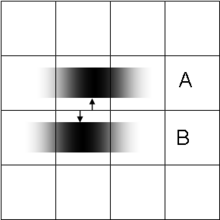
If you are lucky, the match points differ by an exact multiple of pixels, meaning they're "in register" and you can stack multiple frames to get superresolution images,
https://petapixel.com/2015/02/21/a-practical-guide-to-creating-superresolution-photos-with-photoshop/
If the images are off register by fractions of pixels, then you would oversample to generate an image with finer grained pixels, then overlay those images.
The oversampling is similar to an "enhance the image" technology developed by Google.INC using over-sampling and AI facial recognition algorithms.

https://www.extremetech.com/extreme/244105-google-unveils-super-resolution-tech-enhances-works
But you'd need Google.INC to train a new ResNet/PixelCNN programmable AI and feed it thousands and thousands of images of craters and moons, to eventually build up a neural net that "sees" geology and impact craters...
Because right now, the Google.INC AI would simply draw a face on Ultima Thule.
Posted by: MahFL Feb 23 2019, 05:02 AM
I think a lot of us were expecting to see more detail, of course MU69 does not have the topography Pluto does. Also the pictures of Manhattan that were posted by people did really help much to give an accurate expectation. There are no Freeways or Skyscapers.
Posted by: wildespace Feb 23 2019, 05:55 AM
[post removed] just got confused with LORRI images archive, sorry.
Posted by: Marcin600 Feb 23 2019, 08:21 PM
Raw pictures posted: http://pluto.jhuapl.edu/soc/UltimaThule-Encounter/
I wonder that, maybe however, the NH team is hiding "something special" for the March conference...???
it's just my little hope ![]()
Posted by: fredk Feb 23 2019, 09:08 PM
Well, there's been no public release yet of the colour version of the http://pluto.jhuapl.edu/News-Center/News-Article.php?page=20190124 from Jan 1st...
Posted by: PhilipTerryGraham Feb 24 2019, 03:00 AM
I'll quote mcaplinger on the topic of when the MVIC data will be released:
Posted by: Roman Tkachenko Mar 8 2019, 02:19 AM
This animation helps to better understand the shape
Posted by: vikingmars Mar 8 2019, 06:43 AM
What a nice animation ! Thank you Roman
Posted by: alan Mar 8 2019, 10:11 PM
Recent talk by Alan Stern:
https://www.youtube.com/watch?v=vCr_bkzgFT0&feature=youtu.be&t=3714
Posted by: stevesliva Mar 11 2019, 03:31 PM
That was excellent, thanks.
Posted by: alan Mar 17 2019, 06:34 PM
Lots of Ultima Thule talks tomorrow at the LPSC:
https://www.hou.usra.edu/meetings/lpsc2019/pdf/lpsc2019_program.htm#sess103
Posted by: fredk Mar 18 2019, 03:12 PM
To the extent that the spectral responses of the two cameras are different, you could create a crude 2-false-colour image from those frames. You'd need to warp one frame to align them better, though.
Posted by: Phil Stooke Mar 18 2019, 03:53 PM
I was in that session at LPSC - they are working on shape and stereo but more to do for a final shape model. Then the images can be merged effectively.
Jeff Moore said they are not convinced the small pits are impact craters, and suggest some may be drainage depressions leading into sub-surface voids. Not sure I agree, but a size distribution plot would be a useful thing to help with that problem.
Phil
Posted by: alex_k Mar 18 2019, 03:58 PM
A great idea, Fredk!
A rough attempt:
[attachment=44439:lorri_mvic4.png]
(update 2)
Posted by: HSchirmer Mar 18 2019, 04:06 PM
Jeff Moore said they are not convinced the small pits are impact craters, and suggest some may be drainage depressions leading into sub-surface voids. Not sure I agree, but a size distribution plot would be a useful thing to help with that problem.
Phil
Curious, if there is void filling, would the "Brasil nut effect" being temperature dependent change things?
There has been some suggestion that size sorting is temperature dependent,
- http://large.stanford.edu/courses/2007/ph210/spector2/
Reverse Brazil Nut Problem
A paper by Hong et al. in 2001 predicted the "reverse Brazil nut effect", in which under certain conditions, their numerical observation showed the opposite effect - large beads falling to the bottom of a container, and small beads rising to the top of the container. [4,5] A previous finding of theirs showed that a system of hard sphere condenses in the presence of gravity below a critical temperature Tc [6].P.V. Quinn and D.C. Hong, Phys. Rev. E 62, 8295 (2000).
Rather interesting to consider the possibility of thermodynamics past Pluto driving "grain tectonics".
Imagine if the Brazil-nut effect shakes warm KBOs into minimum surface spheres; while the reverse-Brasil-nut-effect shakes cool KBOs into maximum sufrace pancake?
Posted by: alan Mar 18 2019, 04:18 PM
Livestream here at 1 ET
https://livestream.com/viewnow/lpsc2019
Posted by: alan Mar 18 2019, 05:31 PM
unmannedspaceflight.com was just mentioned at the press conference
Posted by: HSchirmer Mar 18 2019, 05:42 PM
Eh, names are fair when names are given...
https://livestream.com/viewnow/lpsc2019
"This was posted to Unmanned Spaceflightdot com by citizen scientist Roman Tkachenko"

http://www.unmannedspaceflight.com/index.php?showtopic=8454&view=findpost&p=244187
Posted by: stevesliva Mar 18 2019, 09:25 PM
Press conference material is up on NH website
http://pluto.jhuapl.edu/News-Center/News-Article.php?page=20190318
with slides here:
http://pluto.jhuapl.edu/News-Center/Press-Conferences/index.php?page=2019-03-18
Posted by: atomoid Mar 19 2019, 02:32 AM
more reporting coming out, this from https://www.sciencenews.org/article/new-horizons-mu69-ultima-thule-frankenworld?tgt=nr
Posted by: alex_k Mar 19 2019, 05:40 PM
Resolution is also increased.
update: improved version
Posted by: alan May 16 2019, 07:22 PM
Initial results from the New Horizons exploration of 2014 MU69, a small Kuiper Belt object
https://science.sciencemag.org/content/364/6441/eaaw9771
Posted by: nprev May 16 2019, 11:53 PM
Outstanding. ![]()
In addition to name-checking the forum & highlighting Roman's work, an UMSF moderator is one of the coauthors of this paper. ![]()
Posted by: Explorer1 Nov 14 2019, 03:48 AM
Though this issue is moot now, the article only says "following a significant backlash", so I don't think the final name and the New Horizons team nickname are really connected in any way. The headline writers are just looking for clicks by putting the two together.
I do wonder if the sports equipment transport company or the air base in Greenland ever got a complaint...
Posted by: tanjent Nov 14 2019, 05:08 AM
If the new name is all right with Alan, it's certainly OK with me. I do wonder whether NASA will also be giving new names to the two individual lobes?
Posted by: nprev Nov 14 2019, 06:34 AM
The IAU is the authority for all naming conventions, including classes of features. What might get interesting is what exactly the lobes would be classified as geologically, or if they'll come up with a new category for them.
This may have already happened with comets since 67P C-G, 103/P Hartley, and Borrely apparently consist of lobes as well, though the mechanism by which they arose may be different.
Posted by: tanjent Nov 14 2019, 09:48 AM
More on the naming process that was followed in this instance
http://www.spacedaily.com/reports/NASA_renames_faraway_ice_world_Arrokoth_after_backlash_999.html
IAU had the final say, but it seems the change was initiated by the NH team itself, then passed to NASA, who then consulted the Powhatan tribal elders.
Posted by: fredk Nov 14 2019, 03:28 PM
One problem with the name "Ultima" was that it was rather... ultimate. Even for NH, with luck Arrokoth won't be its farthest encounter and "Penultima" might've been more appropriate. ![]()
(PS - time to change the name of this thread?)
Posted by: nprev Nov 15 2019, 12:58 AM
Thread title amended as requested. ![]()
Posted by: Roman Tkachenko Jun 21 2020, 03:42 AM
Arrokoth Flyby
(3D visualization)
Posted by: Antdoghalo Jun 21 2020, 05:24 AM
I can't stop rewatching that. It's just peacefully tumbling out there as NH flies by it.
Posted by: Alan Stern Jun 21 2020, 12:57 PM
Beautiful Roman, just beautiful-- mezmerizing!
Posted by: Roman Tkachenko Jun 21 2020, 06:52 PM
Thank you Alan!
Posted by: Roman Tkachenko Jun 21 2020, 09:49 PM
Arrokoth Synthetic Stereo Pair (Cross-Eyed Version)
Posted by: Explorer1 Jun 21 2020, 09:57 PM
This is really wonderful, especially since there were no actual "half-phase" images, (the lack of illumination combined with flyby speed made it impossible, I assume)?
Posted by: Alan Stern Jun 23 2020, 11:44 AM
(3D visualization)

Roman-- Just thought you'd like to know that Brian May loved your new stuff!
-Alan
Posted by: Roman Tkachenko Jun 23 2020, 01:05 PM
-Alan
Wow! You made my day! Thanks a lot Alan!
Posted by: walfy Jun 24 2020, 11:11 PM
Haven't made an anaglyph for awhile, couldn't resist with this one. What a fantastic object. Roman, thank you for the great work on Arrokoth!
Posted by: Roman Tkachenko Jan 2 2021, 10:30 PM
Arrokoth Approach.
About 230 images of Arrokoth were aligned, stacked, deconvolved, resized and de-rotated to create this 'ping-pong' animation.
The animation covers 13 hours of observations.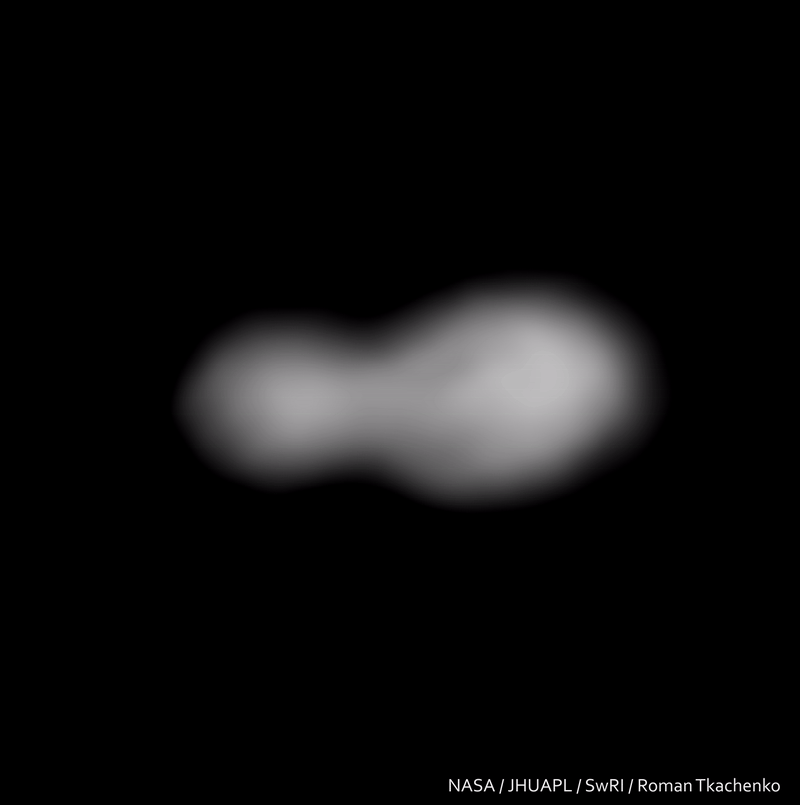
Posted by: Phil Stooke Jan 3 2021, 11:20 PM
That is fascinating, Roman. Well done!
Phil
Posted by: Alan Stern Jan 4 2021, 02:02 AM
About 230 images of Arrokoth were aligned, stacked, deconvolved, resized and de-rotated to create this 'ping-pong' animation.
The animation covers 13 hours of observations.

Gorgeous work Roman!
Posted by: peikojose Jan 24 2021, 01:18 PM
It is so good, I really enjoy Roman's work.
Maybe is there a way of training a AI machine learning program to generate the other side of Arrokoth?
Posted by: Explorer1 Jan 24 2021, 03:23 PM
We already know what the other side looks like, at least in terms of shape, from the observations of blocking starlight during the flyby.
See here: http://pluto.jhuapl.edu/News-Center/News-Article.php?page=20190208
Posted by: peikojose Jan 24 2021, 06:13 PM
See here: http://pluto.jhuapl.edu/News-Center/News-Article.php?page=20190208
Thanks!
Posted by: Phil Stooke Jan 24 2021, 10:31 PM
On the other hand, AI is not the genius your post suggests it is, it can't tell us anything about the actual appearance of the other side in the absence of actual data. The animation goes so fast that it's a bit hard to tell what we are seeing, but this view does not include the other side, just the side we can see at close approach from a different angle.
Phil
Posted by: Marcin600 Oct 16 2023, 10:41 PM
I noticed that the official names of the surface features on Arrokoth have finally appeared on the IAU website: https://planetarynames.wr.usgs.gov/Page/ARROKOTH/target
(and also Bennu: https://planetarynames.wr.usgs.gov/Page/BENNU/target
and Ryugu: https://planetarynames.wr.usgs.gov/Page/RYUGU/target )
Powered by Invision Power Board (http://www.invisionboard.com)
© Invision Power Services (http://www.invisionpower.com)

